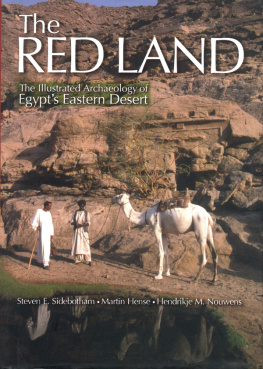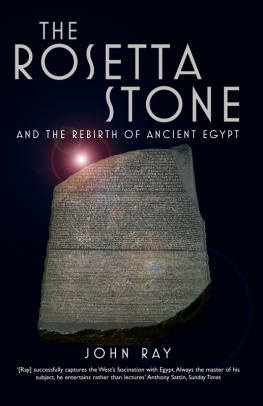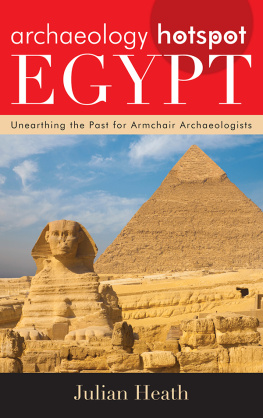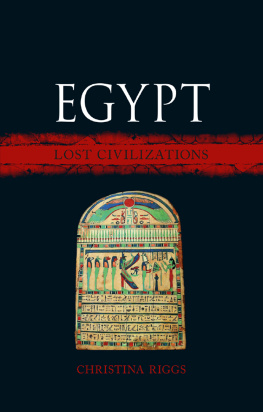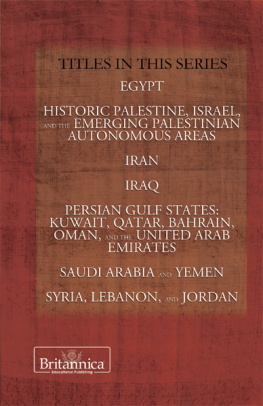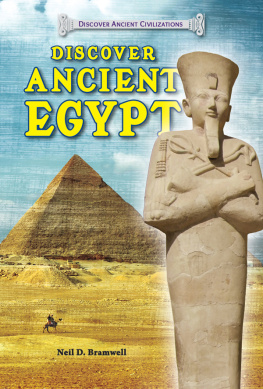Before the Pharaohs
Before the Pharaohs
Exploring the Archaeology of Stone Age Egypt
Julian Maxwell Heath
First published in Great Britain in 2021 by
Pen & Sword History
An imprint of
Pen & Sword Books Ltd
Yorkshire Philadelphia
Copyright Julian Maxwell Heath 2021
ISBN 978 1 52679 041 5
ePUB ISBN 978 1 52679 042 2
Mobi ISBN 978 1 52679 043 9
The right of Julian Maxwell Heath to be identified as Author of this work has been asserted by him in accordance with the Copyright, Designs and Patents Act 1988.
A CIP catalogue record for this book is available from the British Library.
All rights reserved. No part of this book may be reproduced or transmitted in any form or by any means, electronic or mechanical including photocopying, recording or by any information storage and retrieval system, without permission from the Publisher in writing.
Pen & Sword Books Limited incorporates the imprints of Atlas, Archaeology, Aviation, Discovery, Family History, Fiction, History, Maritime, Military, Military Classics, Politics, Select, Transport, True Crime, Air World, Frontline Publishing, Leo Cooper, Remember When, Seaforth Publishing, The Praetorian Press, Wharncliffe Local History, Wharncliffe Transport, Wharncliffe True Crime and White Owl.
For a complete list of Pen & Sword titles please contact
PEN & SWORD BOOKS LIMITED
47 Church Street, Barnsley, South Yorkshire, S70 2AS, England
E-mail:
Website: www.pen-and-sword.co.uk
Or
PEN AND SWORD BOOKS
1950 Lawrence Rd, Havertown, PA 19083, USA
E-mail:
Website: www.penandswordbooks.com
Acknowledgements
S everal organizations and individuals have made generous contributions to this book and, as a result, have made its completion an easier task. I thank you all but in particular I would like to express my gratitude to: Professor Wouter Claes, Professor Joel D. Irish, Professor John McKim Malville, Professor Pierre Vermeersch and Dr Francis Wenban-Smith.
Introduction
A ncient Egyptian civilization is rightly renowned for its remarkable archaeological legacy, with the magnificent monuments and treasure-filled tombs of pharaonic Egypt an enduring source of fascination for countless numbers of people around the world. However, while the spectacular allure of ancient Egypt is hard to deny, it is not with its archaeology that this book is concerned, but rather with that of the shadowy peoples of prehistoric or Stone Age Egypt. Admittedly, the archaeological evidence from the Egyptian Stone Age may often appear primitive alongside that of ancient Egypt, particularly that from the earlier periods of Egyptian prehistory. However, this does not lessen its importance and, as we will see, this evidence has provided many compelling insights into life (and death) in Egypts distant past. It is also worth bearing in mind that the prehistoric communities of Egypt ultimately set in motion the major social changes and processes that led to the emergence of one of the worlds greatest ancient civilizations in the Nile Valley, some 5,000 years ago.
Countless traces of Stone Age life can be found scattered throughout the Egyptian landscape. These were left by a complex cultural milieu of Palaeolithic (Old Stone Age) and Neolithic (New Stone Age) communities who inhabited not only the Nile Valley and Delta, but also the flanking Western and Eastern Deserts, with these two deserts forming the eastern edge of the Sahara (the Western Desert is alternatively labelled the Libyan Desert). It was Sir John Lubbock,
Of course, archaeology has come a long way since its formative years in the nineteenth century, when the early archaeologists or antiquarians began to investigate in earnest the archaeological remains of the Stone Age, and there is now a much greater understanding of the diverse mosaic of prehistoric cultures that lived during the Palaeolithic and Neolithic. Thanks to the advent of radio-carbon dating in the late 1940s and the ever more sophisticated battery of dating techniques that archaeologists have at their disposal, more sound chronological frameworks with various subdivisions have also been established for the Palaeolithic and Neolithic. However, looking at Palaeolithic and Neolithic peoples at a basic level, the former were hunter-gatherers who followed a mobile lifestyle for many thousands of years, living in seasonal camps, their lives dictated by wild food resources, while the latter rejected this deeply ancient way of life and began settling down in permanent farming settlements where life revolved around domesticated crops and animals.

Egypt from space: photograph taken by Nasas Terra Satellite. ( Jacques Descloitres, Creative Commons )
The Lower Palaeolithic
The story of the Egyptian Stone Age begins in the Pleistocene Period (c.2.5 million to 10,000 BCE ) years ago, in the Lower Palaeolithic, with the earliest unambiguous evidence for a human presence found at sites in the Western Desert dating to c.300,000 BCE , although Egypts earliest Stone Age inhabitants very probably arrived well before this time. The evidence garnered through geological research is less ambiguous, revealing that during the Egyptian Lower Palaeolithic, there were lengthy periods when the Western and Eastern Deserts were not the barren and inhospitable places that for the most part they are today:
To imagine what it must have been like in those times, we must picture some of the rolling semiarid savannahs of eastern and southern Africa today, such as the Serengeti Plain. Giraffes, gazelles, and even hippopotami abounded on the now arid margins of the Nile Valley during the periodic rainy or pluvial periods that prevailed in the Southern Hemisphere as glacial advances and retreats in the north altered world-wide patterns of rainfall during the Pleistocene [more commonly known as the Ice Age]. Our ancestors followed the game and plant life and congregated around good fishing holes, expanding and contracting their wanderings in response to the pressures exerted by local climatic conditions.
These good fishing holes were the lakes, pools and springs created as a result of the significant amounts of rain that fell in Egypt during the Lower Palaeolithic pluvial periods. It is also worth noting that at this time, the famous River Nile would have been somewhat different in appearance: the Protonile, the river flowing through Egypt at this time, was a braided, intertwined network of river channels rather than a single channel like todays Nile.
The hunter-gatherer groups that roamed the Egyptian landscape in the Lower Palaeolithic used a distinctive Stone Age toolkit that archaeologists refer to as the Acheulean

Savannah landscape in Taita Hills Wildlife Sanctuary, Kenya. ( C.T. Cooper, Creative Commons )




